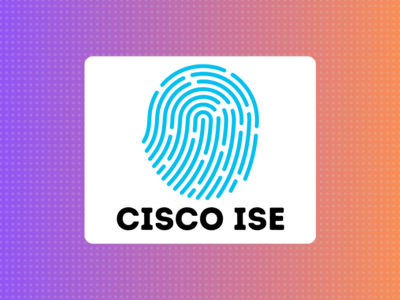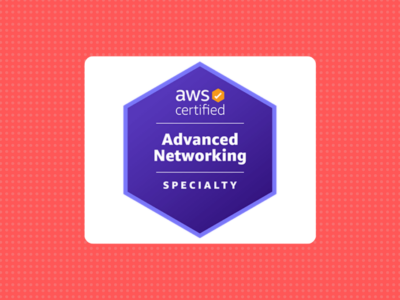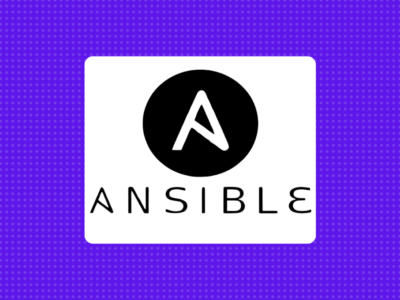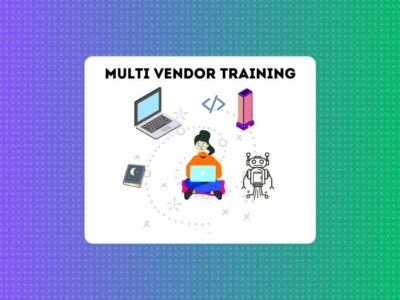CCIE Online Training – CCIE Course
Overview
WHAT YOU’LL LEARN IN CCIE TRAINING/CCIE ONLINE TRAINING
- Advanced Networking Mastery: Deep dive into intricate networking concepts crucial for enterprise infrastructure.
- Large-Scale Network Design: Learn to design and implement expansive, high-performing networks.
- Routing and Switching Excellence: Explore advanced techniques for optimized network performance.
- Robust Network Security: Implement effective security measures against potential threats.
- Scalable Solutions: Build scalable, high-performance network solutions for modern enterprises.
- Integration of Technologies: Master the integration of SD-WAN, IoT, and cloud services.
- Troubleshooting and Optimization: Develop skills to troubleshoot and optimize network performance.
- Automation and Orchestration: Learn automation to streamline tasks and boost efficiency.
- Hands-On Lab Experience: Apply knowledge in practical scenarios through lab exercises.
- Effective Collaboration: Improve collaboration and communication with cross-functional teams.
- CCIE Exam Preparation: Be well-prepared for the CCIE Enterprise Infrastructure exam.
- Real-World Case Studies: Analyze practical case studies for applied learning.
- Career Advancement: Boost your career with a globally recognized certification.
- After completing CCIE online training, you will be prepared for the CCIE Enterprise Infrastructure examination.
HOW YOU’LL BENEFIT FROM CCIE TRAINING
CCIE Certification Training brings a myriad of advantages that go beyond just acquiring a certification. Here’s how you’ll benefit:
- Expertise Recognition: CCIE Training positions you as an expert in enterprise infrastructure, earning recognition from peers and employers alike.
- Career Acceleration: Open doors to advanced career opportunities by showcasing your proficiency in complex networking scenarios.
- Industry Relevance: Stay ahead in the ever-evolving tech landscape, ensuring your skills align with industry trends and demands.
- Problem-Solving Prowess: Hone your troubleshooting skills, empowering you to efficiently identify and resolve network issues in real-world situations.
- Innovation Integration: Learn to integrate emerging technologies seamlessly, staying at the forefront of technological innovation within your organization.
- Operational Efficiency: Automation and orchestration skills acquired during training enhance your ability to streamline processes, leading to increased operational efficiency.
- Global Networking Community: Join a global community of CCIE professionals, providing opportunities for networking, collaboration, and knowledge exchange.
- Increased Confidence: Mastering complex networking concepts and scenarios boosts your confidence in handling challenging tasks, making you an invaluable asset to your team.
- Career Flexibility: Gain the versatility to work across various industries and sectors, as CCIE certification is recognized worldwide.
- Personal Growth: CCIE Training isn’t just about professional development; it’s a journey of personal growth, pushing your boundaries and expanding your intellectual horizons.
WHO SHOULD ENROLL IN CCIE COURSE
CCIE Certification Training is tailored for individuals seeking to elevate their expertise in enterprise networking and infrastructure. The program is particularly beneficial for:
- Experienced Network Professionals
- Network Architects
- Solutions Architect
- Security Professionals
- System Integrators
- IT Managers and Directors
- Network Consultants
- IT Professionals Pursuing Career Advancement
- Technology Enthusiasts
- Professionals Seeking Cross-Functional Skills
- Anyone Aspiring to Master Advanced Networking
CCIE CERTIFICATION TRAINING PREREQUISITES
There are no formal prerequisites for CCIE Enterprise Infrastructure certification. The certification process involves successfully completing two exams: a qualifying exam (ENCOR) that delves into core enterprise infrastructure technologies, and a hands-on lab exam that evaluates your capabilities in handling enterprise networks across their entire lifecycle – from design and deployment to operation and optimization.
Earning the CCIE Enterprise Infrastructure certification is a testament to your proficiency in managing intricate enterprise infrastructure solutions. To ensure success in the CCIE Enterprise Infrastructure certification, candidates should possess the following:
- Foundational Networking Knowledge
- Real-World Experience in Networking
- Familiarity with Cisco Technologies
- Solid Understanding of TCP/IP
- Knowledge of Routing and Switching
- Understanding of Network Security Principles
- Dedication to Hands-On Learning
- Commitment to Continuous Learning
CCIE Enterprise Infrastructure Equipment and Software List
The CCIE practical exam evaluates candidates on their ability to configure solutions using the equipment and software versions listed below. Virtual machines- Cisco CSR 1000v Series Cloud Services Routers with Cisco IOS XE SD-WAN Release 16.12
- Cisco IOSv with Cisco IOS Software Release 15.8
- Cisco IOSv-L2 with Cisco IOS Software Release 15.2
- Cisco SD-WAN (vManage, vBond, vSmart, vEdge) Software Release 18.4
- Cisco DNA Center Release 1.3.1
- Cisco Catalyst 9300 Series Switches Release 16.12
- Cisco Identity Services Engine 2.6
- Microsoft Windows 10 Professional
- Ubuntu Desktop 18.04 LTS
CCIE TRAINING OUTLINE
CCIE online training focuses on the expert-level aspects of Cisco CCIE Enterprise Infrastructure Certification blueprints. In this course, you will become skilled in the following topics:
- Software architecture differences between IOS and IOS XE
- Cisco express forwarding and routing concepts
- Network challenges in complex network environments
- Performing expert level IP operations, TCP operations, UDP operations
- Using IOS troubleshooting tools
- Operations and implementation related to LAN switching technologies
- Layer 2 and Layer 3 technologies
- Implementing EIGRP [for IPv4 and IPv6], OSPF [v2 and v3]
- Implementing BGP
- Implementing ISIS [for IPv4 and IPv6]
- Implementing VPN Technologies
- Tunneling operations and verifications
- Enabling Device security
- Operations related to Network security
- Quality of service operations
- Network services features and operations
- Implementation and operation of Software-Defined Infrastructure
- Cisco SD-Access deployment
- Cisco SD-WAN solution deployment
- Infrastructure Automation and Programmability
- Automation and scripting
CCIE TRAINING COURSE/LABS CURRICULUM
- Configuring and Verifying Basic Switch Operations
- Configuring and Verifying Switchport Configuration
- Configuring and Verifying the Operations of VLAN
- Configuring and Verifying Trunks
- Configuring and Verifying the Operations of VLAN Trunking Protocol
- Configuring and Verifying the Operations Spanning Tree Protocol
- Configuring and Verifying Spanning Tree Protocol Configuration
- Configuring and Verifying the Operations STP Protection
- Configuring and Verifying the Operations of RSTP
- Configuring and Verifying the Operations of MSTP
- Configuring and Verifying the Operations Ether-Channel
- Configuring and Verifying the Operations Multilayer Switching
- Configuring and Verifying the Operations DHCP
- Configuring and Verifying the Operations Syslog
- Configuring and Verifying the Operations NTP
- Configuring and Verifying the Operations SNMP and IP SLA
- Configuring and Verifying the Operations SPAN and RSPAN
- Configuring and Verifying High Availability & Operations of HSRP, VRRP and GLBP
- Configuring and Verifying the Operations Port-Security
- Configuring and Verifying the operations of VLAN-ACL and Private VLANs
- Configuring and Verifying the Operations DHCP Snooping and AAA
- Packet Forwarding
- IPv4 Static Routing
- IPv6 Static Routing
- Prefix Lists
- EIGRP Named Mode
- EIGRP and Bidirectional Forwarding Detection (BFD)
- EIGRP Stub
- EIGRP Filtering / Route Filtering
- Advanced EIGRP Lab
- EIGRP Authentication
- Running OSPF on the Interfaces
- OSPF Broadcast Networks
- OSPF Non-broadcast Networks
- OSPF Point-to-Point Networks
- OSPF Point-to-Multipoint and Point-to-Multipoint Non-broadcast Networks
- OSPF Area Types
- OSPF Filtering/ Route Filtering
- OSPF Summarization
- Virtual Links and GRE Tunnels
- Default Route Injection
- OSPF Authentication
- OSPF Best-Path Determination
- OSPF Challenge Lab
- Establishing a BGP Session Using the Correct TTL Value
- Establishing Neighbor Adjacency Using Different Methods
- Route Reflectors
- BGP Confederation
- BGP Backdoor and Conditional Advertisement
- BGP Aggregation
- BGP Filtering / Route Filtering
- BGP Load Balancing
- Remove-Private-AS: A Walkthrough
- AS Migration
- BGP Best-Path Algorithm: A Walkthrough
- DMVPN Mechanics
- DMVPN Designs
- Single Hub, Single Cloud
- Single Hub, Dual Cloud
- Dual Hub, Single Cloud
- Dual Hub, Dual Cloud
- DMVPN NHS Clustering
- DMVPN and DHCP
- Troubleshoot DMVPN Phase 3 with dual-hub
- Next Hop Resolution Protocol (NHRP)
- IPsec/IKEv2 using pre-shared key
- Identify use-cases for FlexVPN
- Configuring Label Distribution Protocol
- Static Routing in a VPN
- EIGRP Routing in a VPN
- EIGRP Site-of-Origin
- OSPF Routing in a VPN
- Backdoor Links and OSPF
- BGP Routing in a VPN
- MPLS and NAT
- Route Targets, Import Maps, and Export Maps
- Internet Access Methods: Partial Internet Routes
- Acquiring an IPv6 Address
- DMVPN and IPv6
- IPv6- Configuring OSPFv3
- IPv6- Summarization of Internal and External Networks
- IPv6- OSPFv3 Broadcast Networks
- IPv6- OSPFv3 Non-Broadcast Networks
- IPv6- OSPFv3 Point-to-Point Networks
- IPv6- OSPFv3 Point-to-Multipoint Networks
- IPv6- OSPFv3 Cost and Auto-Cost
- IPv6- LSAs in OSPFv3
- IPv6- OSPFv3 Area Types
- IPv6- OSPFv3 Authentication
- IPv6- EIGRPv6
- IPv6- BGP Configuration
- Multicast IGMPv2, IGMPv3
- Multicast IGMP Snooping, PIM Snooping
- Multicast IGMP Querier
- MulticastIGMP Filter
- Multicast MLD
- Reverse path forwarding check
- PIM Sparse Mode
- PIM Static RP, BSR, AutoRP
- PIM Group to RP Mapping
- PIM Bidirectional PIM
- PIM Source-Specific Multicast
- PIM Multicast boundary, RP announcement filter
- PIM PIMv6 Anycast RP
- PIM IPv4 Anycast RP using MSDP
- Multicast multipath
- Quality of Service CoS and DSCP Mapping
- Marking using IP Precedence, DSCP, CoS
- Quality of Service Classification
- Quality of Service Policing, shaping
- Precedence, ToS, and DSCP
- Queuing Drop Policies
- SDWAN – Interconnecting the SD-WAN components
- SDWAN – Installing the enterprise root CA server
- SDWAN – Performing initial configurations on vManage via CLI
- SDWAN – Exploring vManage GUI mode
- SDWAN – Performing initial configurations on vBond via CLI
- SDWAN – Registering and installing certificate for vBond in vManage
- SDWAN – Performing initial configurations on vSmart via CLI
- SDWAN – Registering and installing certificate for vSmart in vManage Initializing the WAN Edges
- SDWAN – Performing initial configurations on vEdge via CLI
- SDWAN – Registering vEdges devices in vManage
- SDWAN – Performing initial configurations on cEdge via CLI
- SDWAN – Registering cEdges devices in vManage
- SDWAN – Configuring System template
- SDWAN – Configuring Banner template
- SDWAN – Configuring VPN 0 and VPN 512 templates
- SDWAN – Configuring VPN 0 interface and VPN 512 interface templates
- SDWAN – Configuring AAA, BFD and OMP templates
- SDWAN – Configuring device template from various feature templates
- SDWAN – Adding service-side VPNs in sites using CLI and template
- SDWAN – Configuring Static routing using CLI
- SDWAN – Configuring OSPF routing using CLI
- SDWAN – Configuring BGP routing using CLI
- SDWAN – Configuring EIGRP routing using CLI
- SDWAN – Configuring routing using templates in vManage GUI
- SDWAN – Attaching routing feature template in device template
- SDWAN – Verifying the reachability between sites using CLI and vManage
- SDWAN – Configure TLOC extension for site redundancy
- SDWAN – Configure an arbitrary hub-n-spoke topology for a VPN
- SDWAN – Create a control policy for traffic engineering using TLOCs
- SDWAN – Configuring a policy for firewall service insertion and chaining
- SDWAN – Perform route-filtering for sites using control policy
- SDWAN – Perform TLOC-filtering for sites using control policy
- SDWAN – Configuring route-leaking between VPNs for shared services
- SDWAN – Configuring VPN-Membership policy to control VPN reachability
- SDWAN – Create a data policy to set preferred transport for certain traffic
- SDWAN – Implementing application aware policies for real-time traffic
- SDWAN – Configuring vEdges with NAT and direct internet access
- SDWAN – Implementing cFlowd Policy for flow monitoring
- SDWAN – Configuring various QoS concepts using data policy
- SDWAN – Implementing various Packet Loss Mitigation techniques
- SDWAN – Implementing application-aware firewall policy for traffic
- SDWAN – Creating an IDS/IPS policy for real time traffic analysis
- SDWAN – Implementing URL Filtering to block certain websites
- SDWAN – Verifying AMP* for malware protection
- SDWAN – Configuring DNS/Web Layer Security for DNS
- SDWAN – Implementing Cloud-on-Ramp for SaaS
- SDWAN – Demonstrating Cloud-on-Ramp for IaaS*
- SDWAN – Using vManage GUI to explore various monitoring feature
- SDWAN – Verifying syslog and tcpdump on vEdge devices
- SDWAN – Using apidocs to create a REST API call to query vManage
- SDWAN – Performing software upgrade for controllers and edge devices
- DNAC Restore
- DNAC & ISE Integration
- DNAC – Configuring Border Switch Initial Configuration
- DNAC – Configuring Fusion Router Initial Configuration
- DNAC Design – Network Hierarchy – Site & Building
- DNAC Design – Server Configuration – AAA, NTP, DHCP
- DNAC Design – Device Credentials
- DNAC Design – IP Address Pools
- DNAC – Configuring Skinny Configuration on the Edge Nodes
- DNAC – Configuring Underlay Network – OSPF
- DNAC – Device Discovery & Provisioning
- DNAC Discovery – Discover the Seed Device (Border)
- DNAC Provisioning – Assign the Seed Device
- DNAC Provisioning – Enable LAN Automation to Discover the Fabric Devices
- DNAC Provisioning – Provision the Fabric Devices
- DNAC Design – Reserve the IP Pools for HQ Site
- DNAC Policy – Create the Virtual Networks
- DNAC – Create the Transit Network (L3HANDOFF)
- DNAC – Configure Host-Onboarding
- DNAC – Provision the Device Roles – Control/Border
- DNAC – Provision the Device Roles – Edge
- DNAC – Configure the Fusion Router
- DNAC – Configure User & Groups on ISE
- DNAC – Configure Authorization Profiles for the DNAC VNs
- DNAC – Configure Authorization Policies for the DNAC VNs
- DNAC – Configure the DHCP Server with DNAC Pools
- DNAC – Create the SGT
- DNAC – Re-configure ISE Authorization Policies to use SGTs
- DNAC – Using a default contract to block all communications between SGTs
- DNAC – Creating a SG ACL – Contract
- DNAC – Applying and verifying a Custom SG ACL- Contract
- DNAC – Network Health
- DNAC – Client Health
- DNAC – Path discovery
- DNAC – Templates
- DNAC – Configuring L2 Handoff
- DNAC – Verifying Macro Segmentation – East/West – North/South
TRAINING DETAILS- CCIE CERTIFICATION TRAINING
| CCIE Enterprise Infrastructure Certification Training (Training + Exam Bootcamp) | |
|---|---|
| Training Name | CCIE EI – Enterprise Infrastructure |
| Training Type | Instructor Live Online Training/Classroom Training |
| Batches Available | Regular (Mon-Thu) and (Sat-Sun) |
| Training Duration | 300+ Hours (6 Months) |
| Daily Training Hours | 2/3/4 hours per day |
| Payment Mode | Cash, Credit Card, Debit Card, Bank Transfer, No Cost EMI, UPI, Paypal, Western Union etc. |
| Recorded Video Lectures | 06 months same classes video recording access |
| Lab Access for Tech Classes | Unlimited Online lab access during the training |
| Lab Access for Lab Exam Preparation | 30 Sessions (1 Session = 4 Hours) |
| Study Material | CCIE Lab Workbooks, CCIE Notes handouts |
| Learning Portal | World-class learning system (Web portal, iOS Application, Android Application) |
CISCO CCIE CERTIFICATION 350-401 ENCOR EXAM DETAILS
- Exam Code: 350-401 ENCOR
- Exam Name: Implementing and Operating Cisco Enterprise Network Core Technologies
- Exam Duration: : 120 minutes
- Available languages: English, Japanese
- Exam Location: This exam is conducted at Pearson Vue Centers.
- Vendor Name: Cisco Systems
- Exam Cost: $400 USD, plus tax
CISCO CCIE CERTIFICATION v1.1 LAB EXAM DETAILS
- Exam Name: CCIE Enterprise Infrastructure v1.0
- Duration: 8 hours
- Exam Module 1: Design (3 hours)
- Exam Module 2: Deploy, Operate and Optimize (5 hours)
- Exam Location: This exam is conducted at the Cisco Lab Exam centers only.
- Vendor Name: Cisco Systems
- Exam Cost: $1600 USD, plus tax
FAQs
There are no formal prerequisites for CCIE Enterprise Infrastructure Eaxmiamtion. However, you must pass the CCIE written Exam to become eligible to appear for the CCIE Lab exam. Also, it would help if you had a thorough understanding of the exam topics before taking the Exam. Candidates are recommended to have five to seven years of experience with designing, deploying, operating, and optimizing enterprise networking technologies and solutions before taking the Exam.
350-401 ENCOR - Implementing and Operating Cisco Enterprise Network Core Technologies Certification Exam consists of the following types of questions.
- Multiple choice questions with just one answer
- Multiple choice questions with more than one answers
- Drag & Drop questions
- Fill in the blanks
- Simulation Questions
The following topics are general guidelines for content expected to be included in the exams. Guidelines may change at any time without any notice and Other related topics may also be included in exams.
| Domain | Exam % |
|---|---|
| Architecture | 15% |
| Virtualization | 10% |
| Infrastructure | 30% |
| Network Assurance | 10% |
| Security | 20% |
| Automation | 15% |
Cisco conducts the Cisco ENCOR 350-401 Exam in two ways. Proctored exams delivered at a Pearson Vue Test Center OR OnVUE Online proctored Exam.
- At Test Center: Cisco ENCOR 350-401 certification exam is delivered in a proctored environment at a Pearson VUE Authorized Test Center. To schedule a certification exam or locate a test center, visit https://home.pearsonvue.com/cisco.aspx
- OnVUE Online proctored Exam: Appear Cisco ENCOR 350-401 from your home or office. You can take your Cisco ENCOR 350-401 examination from home through OnVUE online proctoring. A live proctor will monitor you through the webcam on your workstation to provide a secure exam experience.
The same Pearson VUE web account is used to schedule the Cisco ENCOR 350-401 Certification exam at the test center or via OnVUE Online proctored Exam.
The CCIE Enterprise Infrastructure Practical/lab exam consists out of 2 modules that are fixed in time and will be delivered in a fixed sequence:
- Module 1: Design (3 hours)
- Module 2: Deploy, Operate and Optimize (5 hours
The following topics are general guidelines for content expected to be included in the exams. Guidelines may change at any time without any notice and Other related topics may also be included in exams.
| Domain | Exam % |
|---|---|
| Network Infrastructure | 30% |
| Software Defined Infrastructure | 25% |
| Transport Technologies and Solutions | 15% |
| Infrastructure Security and Services | 15% |
| Infrastructure Automation and Programmability | 15% |
CCIE Enterprise Infrastructure Practical/Lab Exam is conducted only at 9 Lab Centers worldwide; Cisco Bangalore is India's only Lab Exam Center. Wait for about ten days after clearing the Cisco ENCOR 350-401 exam, and then schedule your Cisco CCIE EI Lab exam. You will need a Valid Cisco User account and the following information handy for scheduling CCIE Lab exam online.
- Identification number you used to register for your Cisco ENCOR 350-401 exam
- Date of passing Cisco ENCOR 350-401 Exam
- ENCOR 350-401 Exam Passing score
- Click here to book your CCIE Lab Exam: https://ccie.cloudapps.cisco.com/CCIE/Schedule_Lab/CCIEOnline/CCIEOnline
Your CCIE Enterprise Infrastructure Certification is valid for three years.
CCIE Enterprise Infrastructure Certification Recertification requirements must be met before the certification expiration date. Following are the options available for CCIE recertification
- Pass any one expert-level Lab/Practical exam
- Pass any three separate professional concentration exams
- Pass one technology core exam and pass any one professional concentration exam. (This is also a CCNP certification if done in the same track.)
- Pass the CCDE Written Exam
- Earn 120 CE credits
- Pass one technology core exam and earn 40 CE credits
- Pass any two separate professional concentration exams and earn 40 CE credits
- Pass any one professional concentration exam and earn 80 CE credits
Easy payment choices are available, we accept payment via Cash, Credit card, Debit card, Net banking, Draft, Cheque, Payment wallets, and UPI (Monthly EMI Options are also available on some selected Credit Cards & debit cards). You make an online payment from this link: www.imedita.com/myfees
- Monthly EMI Options are also available on some selected Credit Cards & debit cards. The interest to be charged by the bank will be provided to you as an upfront discount at the time of your payment, effectively giving you the benefit of a No-Cost EMI. This discount excludes GST on the interest amount that will be charged by your bank.
- To convert your training fee into a No-Cost EMI offer, the interest amount will be discounted from the price of your training program fee. The total amount you pay to the bank (excluding GST) will equal the training program cost. Bank may charge you GST only on the interest amount. For more details, please check the EMI plans on the payments page - www.imedita.com/myfees
Demo Form: www.imedita.com/register-for-demo/






